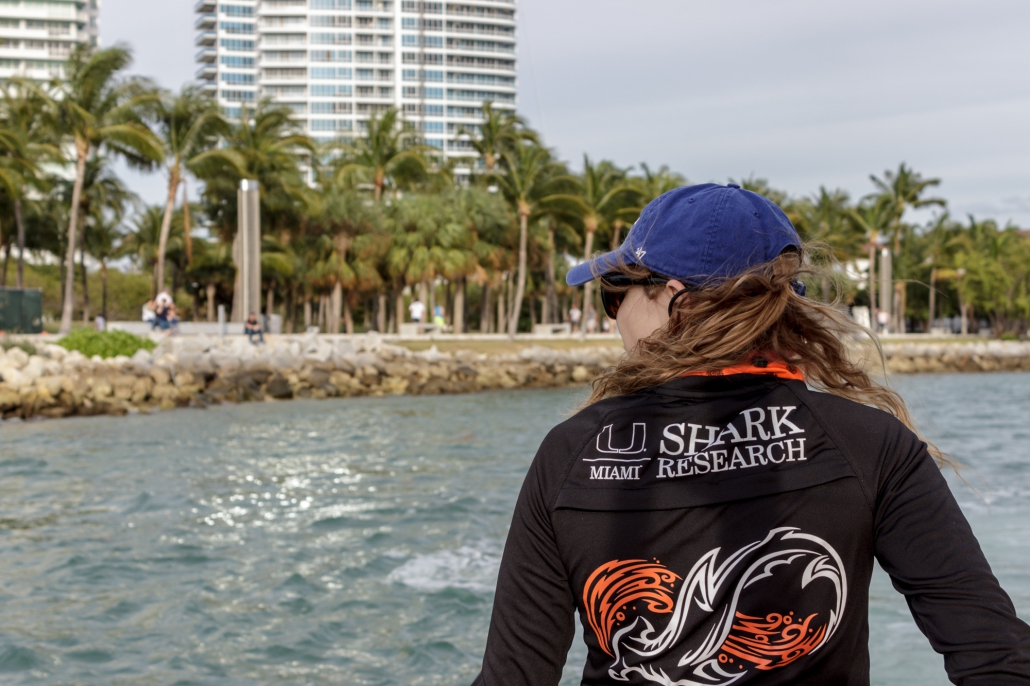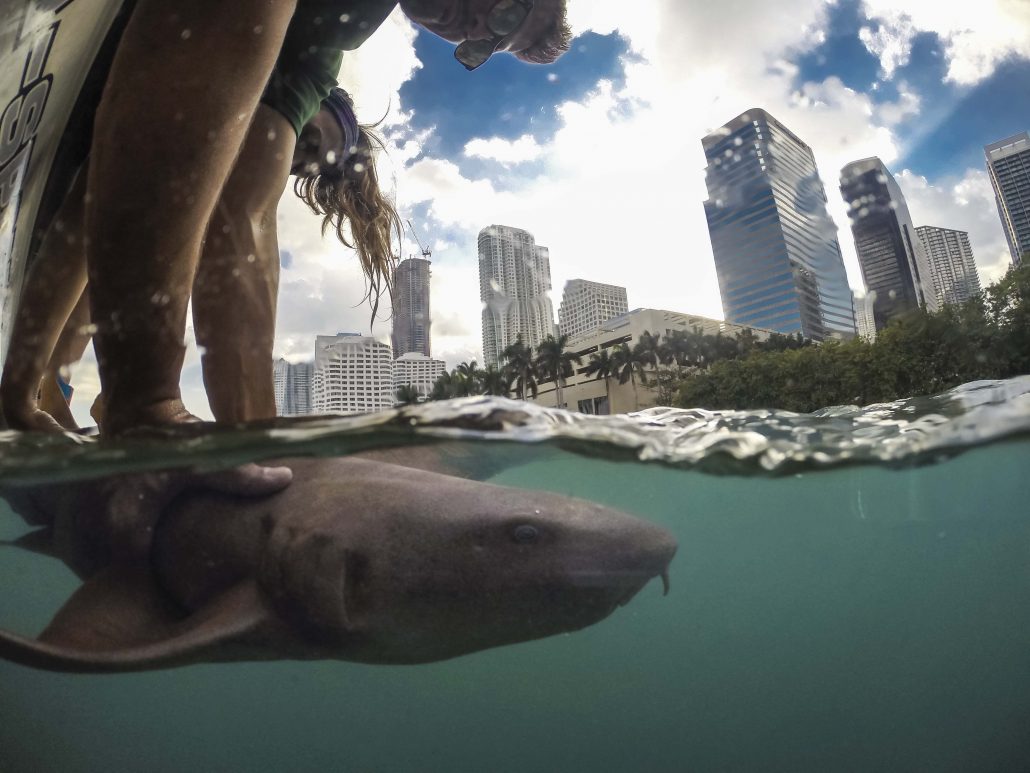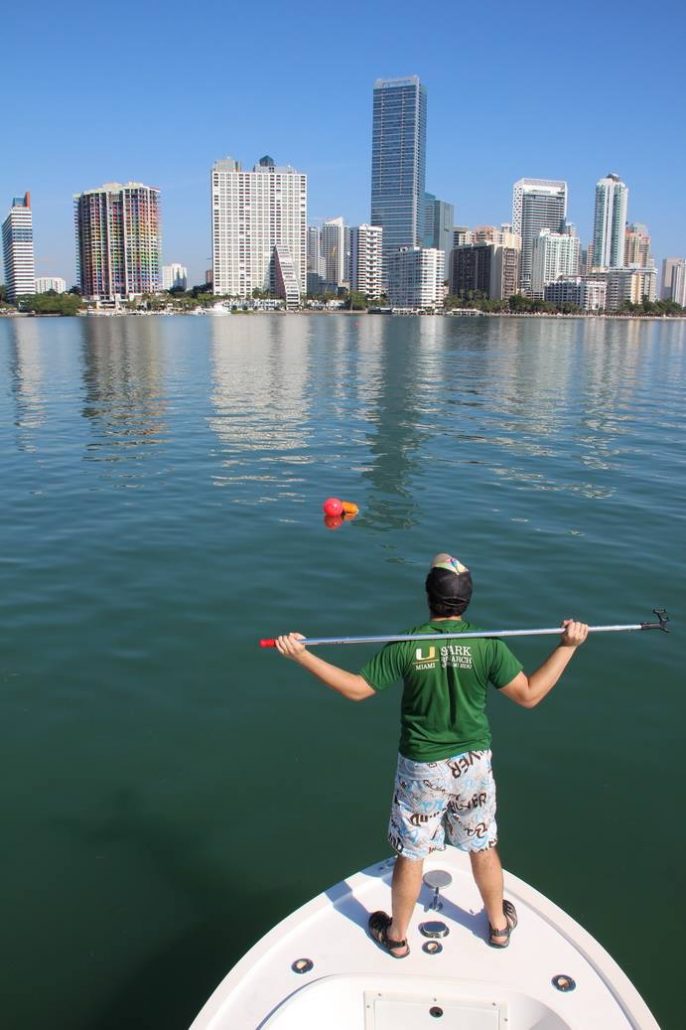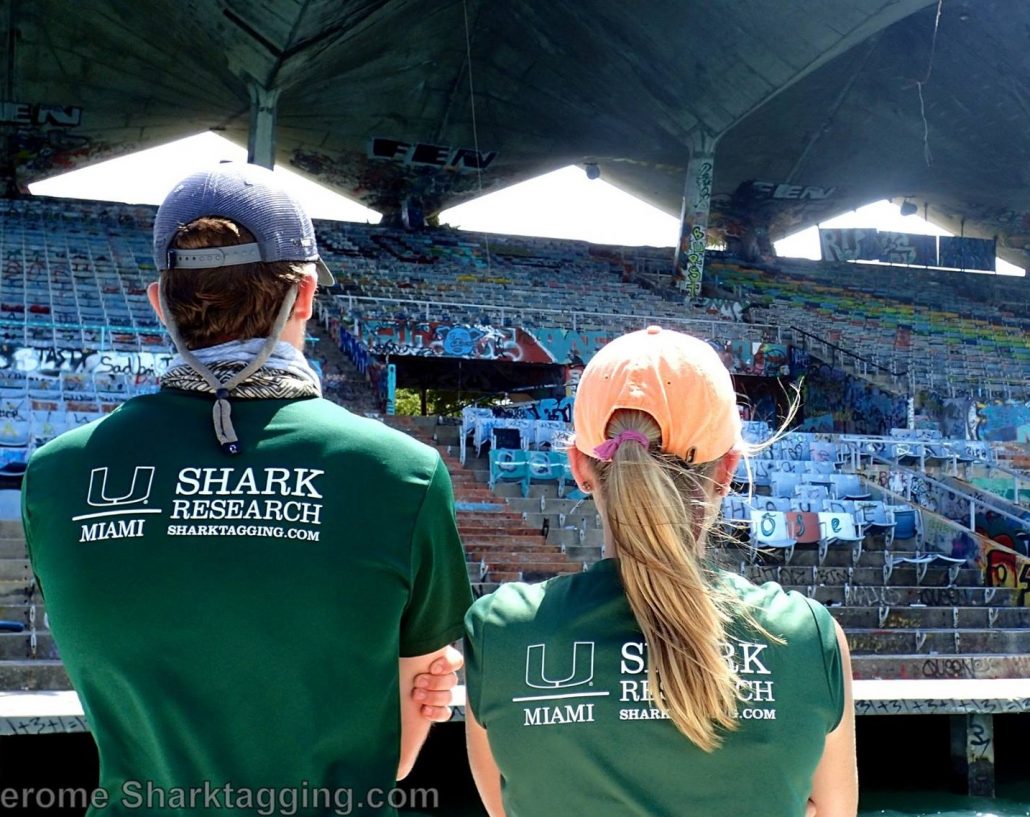Overview
Coastal marine environments are ecologically important, and around 40% of the population of the United States lives near a coastline, altering these habitats. Many species, including sharks, that were previously reliant on coastal ecosystems are now living in increasingly human-altered environments. However, a variety of marine animals are thriving in proximity to human populations, suggesting that they can adapt to these changes.
Urban coastal areas can serve as laboratories for studying the ecological and evolutionary selection processes that affect threatened species. Studying urban sharks can help us understand how shark biology, physiology, behavior, and life-history has changed to help them thrive alongside humans. However, the ramifications of urbanization for coastal shark and ray populations remains largely unknown.
Coastal Florida includes reef, mangrove, seagrass, and estuarine habitats that provide essential resources for a variety of fish species and contain high densities of ecologically important marine predators. However, Florida has been identified as a global hotspot for stressors such as habitat loss and fragmentation and eutrophication (nutrient pollution) from run-off. Biscayne Bay has been heavily impacted by the 2.8 million people living in Miami Dade Count Ty and by the port of Miami, one of the largest ports by volume in the United States. The waters of Biscayne Bay are the busiest of any county in Florida with recreational boating and angling. At present, Northern Biscayne Bay is a highly polluted, degraded, and urbanized environment–that is still important to sharks! Our research focuses on better understanding shark use of highly human-altered habitats.
Some of the major objectives of this work include:




